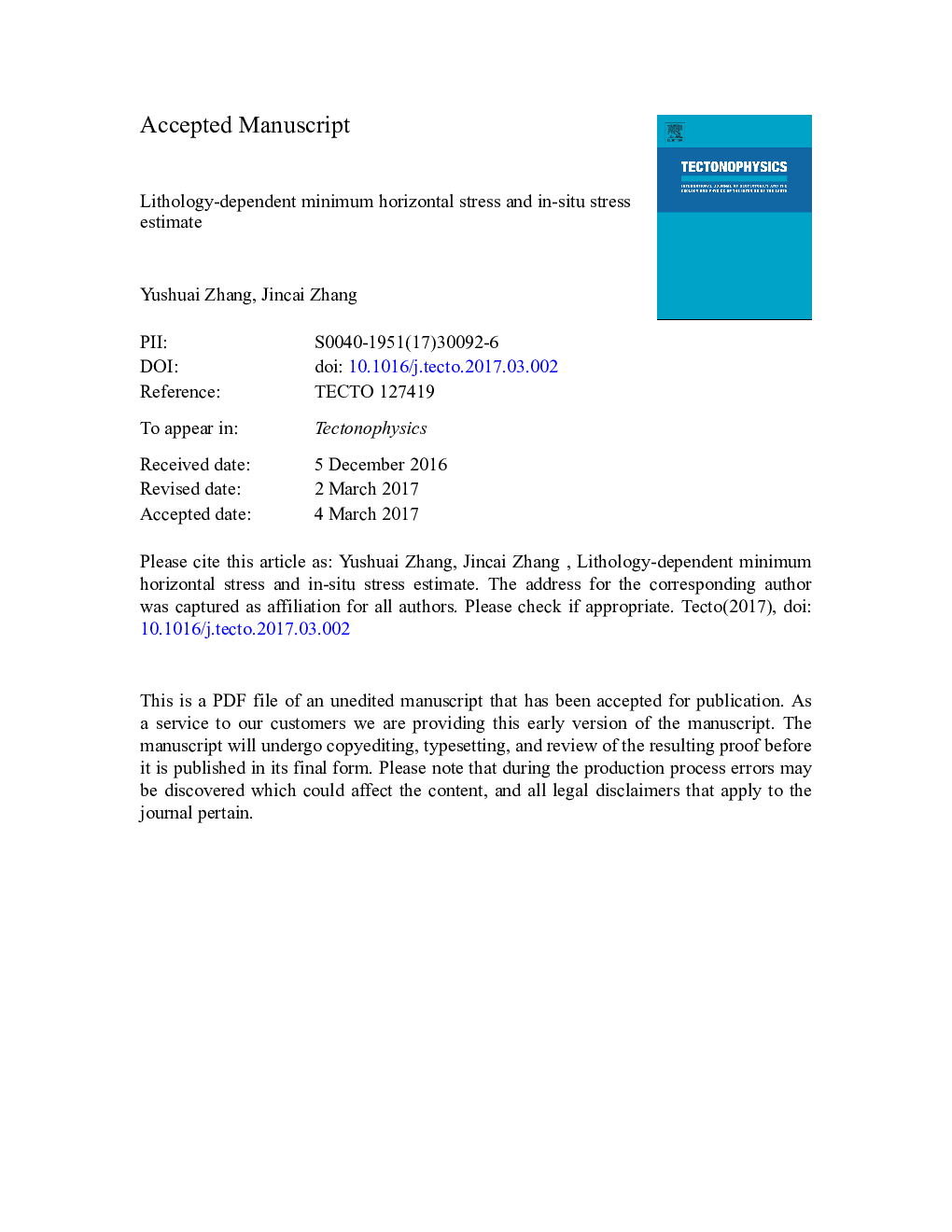| Article ID | Journal | Published Year | Pages | File Type |
|---|---|---|---|---|
| 5781637 | Tectonophysics | 2017 | 25 Pages |
Abstract
Based on the generalized Hooke's law with coupling stresses and pore pressure, the minimum horizontal stress is solved with assumption that the vertical, minimum and maximum horizontal stresses are in equilibrium in the subsurface formations. From this derivation, we find that the uniaxial strain method is the minimum value or lower bound of the minimum stress. Using Anderson's faulting theory and this lower bound of the minimum horizontal stress, the coefficient of friction of the fault is derived. It shows that the coefficient of friction may have a much smaller value than what it is commonly assumed (e.g., μf = 0.6-0.7) for in-situ stress estimate. Using the derived coefficient of friction, an improved stress polygon is drawn, which can reduce the uncertainty of in-situ stress calculation by narrowing the area of the conventional stress polygon. It also shows that the coefficient of friction of the fault is dependent on lithology. For example, if the formation in the fault is composed of weak shales, then the coefficient of friction of the fault may be small (as low as μf = 0.2). This implies that this fault is weaker and more likely to have shear failures than the fault composed of sandstones. To avoid the weak fault from shear sliding, it needs to have a higher minimum stress and a lower shear stress. That is, the critically stressed weak fault maintains a higher minimum stress, which explains why a low shear stress appears in the frictionally weak fault.
Related Topics
Physical Sciences and Engineering
Earth and Planetary Sciences
Earth-Surface Processes
Authors
Yushuai Zhang, Jincai Zhang,
